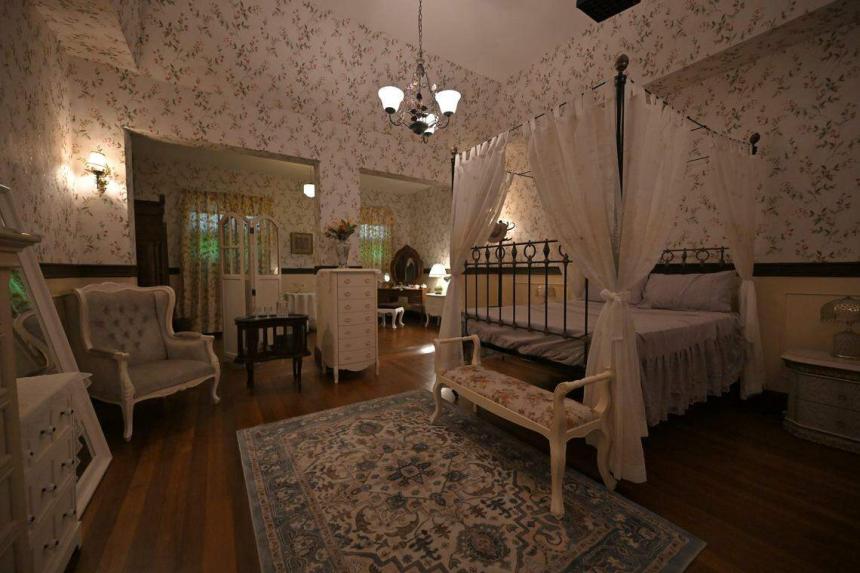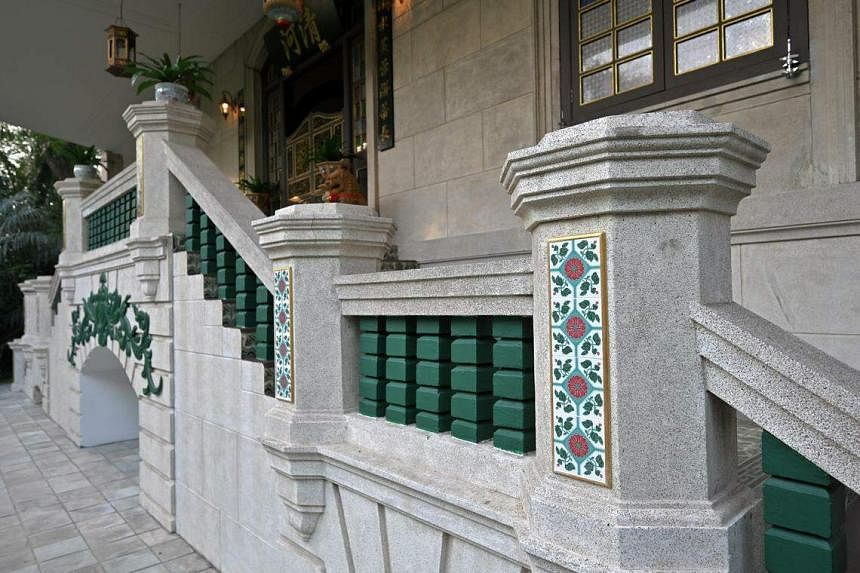Conserved bungalow used for filming Mediacorp drama redecorated without necessary approval: URA


SINGAPORE — National broadcaster Mediacorp recently redecorated a conserved bungalow for filming without first getting necessary permission from the authorities, The Straits Times has learnt.
The works, which included the repainting of part of the building's facade, were done on a bungalow near Mount Faber that Mediacorp had rented to shoot scenes for its upcoming series Emerald Hill — a spin-off of the hit Chinese drama The Little Nonya.
Mediacorp had also replaced the building's windows and embellished its facade with what looked like ornamental tiles.
The changes came to light after Mediacorp hosted a tour of the set for the media on June 7.
The Urban Redevelopment Authority (URA) then inspected the site on June 18, following feedback from a member of the heritage conservation community.
While URA — Singapore's conservation authority — allowed the changes on the basis that they were "superficial in nature" and did not affect the building's original condition, it reminded Mediacorp that permission had to be sought for such works.
The broadcaster was otherwise not penalised for the work it had done without permission.
The two-storey bungalow, which belongs to the state, dates to around 1899, when it was built to house the manager of the New Harbour Dock Company, which managed Keppel Harbour. It was conserved in 2005.
As one of Singapore's more than 7,200 conserved buildings and structures, approval must be sought before changes or modifications are made. These changes also have to comply with URA's conservation guidelines.
But a URA spokesperson told ST that the agency did not receive an application for the works Mediacorp had done on the building.
That said, the agency added that "the works can be allowed under the prevailing guidelines and no historic materials have been damaged".
URA's conservation guidelines detail what can or cannot be done with conserved properties, such as architectural features that need to be kept.

A registered architect or professional engineer may be required to seek permission for the works, depending on the degree of works.
Mediacorp, which rented the bungalow from the Singapore Land Authority, had sought and received approval only to build a temporary shelter separate from the conserved building. The broadcaster had earlier told media outlets that it had built an outdoor kitchen on the site.
The shelter must be demolished when approval for it expires in September.
When contacted, Mediacorp said the company was "committed to revert any leased or licensed venue back to its original state upon expiry of the lease or licence", as part of its production process.
It did not answer questions about why it did not get prior permission for the works done to the building.
The Mediacorp spokesperson added that "all temporary embellishments will be removed upon the completion of filming", and that detailed pictures were taken of the building prior to the commencement of any works to serve as a reference.
Conservators who saw photos of the changes expressed concerns over the embellishments that were added to the building, such as those affixed to the building's Shanghai plaster finishes - including on concrete bases of the building's four cast-iron columns.
Ho Weng Hin, co-founder of architectural conservation consultancy Studio Lapis, said Shanghai plaster — a cement-based finish that results in a textured surface — is very difficult to repair when damaged.

Architectural conservation academic Yeo Kang Shua added that the manner in which alterations are done would determine whether they are reversible.
For instance, the type of adhesive used for temporary attachments or embellishments, as well as any solvents used to remove them, could damage the surfaces they are attached to, he said.
Dr Yeo said the use of nails, staple bullets or screws could potentially also cause lasting harm to timber, while scraping off layers of paint without documenting them before new layers are applied means valuable historical data on buildings might be lost.
Based on industry best practices, Ho said that false walls or "sacrificial layers" need to be constructed for new decorative finishes to be applied within the interiors of conserved buildings, so that the historic fabric of the building will not be affected - it is not clear if such layers were used for the property's redecoration.
While URA approved Mediacorp's works despite the procedural lapse, both Ho and Dr Yeo acknowledged that it is difficult for the authorities to regulate Singapore's 7,200 conserved properties.
In the absence of a regular inspection regime that covers all conserved properties, Ho suggested that some form of minimal surveillance can be put in place.
For instance, by educating the public about conserved buildings and where they are located, members of the public could notify the authorities when they see inappropriate works being done.
Taken in the right spirit, this could lead to better upkeep of Singapore's conservation areas, said Ho.
This article was first published in The Straits Times. Permission required for reproduction.